Localization in Mine Action
Where the Possible Meets the Necessary
CISR JournalThis article is brought to you by the Center for International Stabilization and Recovery (CISR) from issue 28.1 of The Journal of Conventional Weapons Destruction available on the JMU Scholarly Commons and Issuu.com.
By Markus Schindler [ Fondation suisse de déminage ]
While arguments for greater localization in humanitarian aid are strong, in humanitarian mine action (HMA) the case is not always as clear and requires detailed discussion. Despite these challenges, however, the development of national nongovernmental organizations (NNGOs) in mine action is advocated for, as they can offer local knowledge, reduce costs, improve efficiency, and contribute to national ownership. HMA stands out from other sectors due to its resource-intensive and highly regulated nature, often necessitating the use of expensive equipment and specialized expatriates. This article discusses the concept of localization in HMA, emphasizing its distinct challenges compared to other humanitarian sectors. It further outlines the existing barriers to localization from the perspective of international donors, national authorities, international NGOs (INGO), and NNGOs while proposing solutions to enhance the capacity of national actors and ensure long-term sustainability of local HMA efforts.

Definition of Localization
The call for greater localization of humanitarian aid has been emanating from various directions. Many of the world’s leading donors, together with major INGOs and countless national counterparts are demanding more substantial national ownership in humanitarian action—exemplified in the Grand Bargain,1 where signatories have committed “to making principled humanitarian action as local as possible and as international as necessary.”2 Despite its burgeoning appeal, however, the term localization is lacking a universally agreed definition.3 In the context of this article, localization is understood as efforts that seek to increase local ownership within the humanitarian system by “empowering local responders in affected countries to lead and deliver humanitarian aid.”4
The Concept of Localization in the Mine Action Sector
While there is a growing concert of voices from the global south and many allies from the global north that are demanding change in the form of localization and “decolonialization” of aid, many of the arguments brought forward appear more akin to moral appeals than to evidence-based business cases that would convince donors to make substantial changes to their funding mechanism.5 Given the modest advancements observed to date, it is imperative to address a fundamental question: Is localization a solution in search for a problem? This issue gains even more importance in the mine action sector, where many of the arguments for localization from the field of humanitarian action appear to carry less weight than in other sectors.
HMA is often considered an outlier within the field of humanitarian action, with sector-specific peculiarities that impact the justification, nature, and scope of localization. Most notably, HMA is particularly resource-intensive, necessitating high budgets to accommodate the costs associated with its execution. This expense is in part due to the procurement of specialized, often expensive equipment that can be challenging to import due to various regulatory and logistical constraints. Furthermore, the high-risk nature of mine action often demands the recruitment of highly specialized expatriates, whose expertise in this niche field commands premium remuneration. These factors, coupled with the heightened insurance costs intrinsic to high-risk operations, underscore the substantial financial investment required for HMA.
The regulatory landscape of HMA is uniquely robust, characterized by stringent oversight from dedicated government bodies, such as National Mine Action Authorities (NMAA) and Centers (NMAC). These entities set out national strategies and enforce compliance with a framework of National Mine Action Standards (NMAS), in addition to adherence to relevant national legislation. NMACs are usually directly involved in tasking HMA operators with specific activities in clearly defined areas that are in line with national priorities. Moreover, HMA organizations are required to comply with International Mine Action Standards (IMAS) and internal standard operating procedures (SOPs). This regulatory environment ensures that mine action operations are executed within a rigorously controlled and standardized system, which is essential for both the safety of personnel and the effectiveness of the mine action efforts.
As a consequence of such unique features, many of the justifications for the call of greater localization in humanitarian action do not carry the same weight when applied to HMA.
Lack of contextual understanding. Proponents of localization often argue that international actors may lack an in-depth understanding of local contexts, including cultural, social, and geographical nuances, which can lead to ineffective or inappropriate responses. However, HMA responses are often not only specifically prescribed by national authorities, but also highly regulated and standardized, leaving only limited room for adjustments to local contexts. Where such adjustments are possible, best practice recommends that they are developed and carried out by HMA organizations’ local staff with knowledge of the cultural context.

Unsustainability. Some argue that externally driven humanitarian interventions tend to struggle to maintain long-term impact after international organizations leave due to a lack of local ownership and involvement. While this may be the case for certain sectors in the humanitarian field, HMA differs in some fundamental aspects. INGOs in this field have displayed remarkable staying power, from Afghanistan to Laos—as long as funding is available. When there is a shortage of funding, INGOs may leave the country, returning once funding is available again. NNGOs lack this option, leaving them less resilient to funding shortages than INGOs. They stand to lose both equipment and staff, and in many cases become unable to operate and cease to exist, unless they also engage in humanitarian activities other than HMA where funding is available.
Insufficient local capacity. Another common concern is that without localization, there is a missed opportunity to build the capacity of national actors, local organizations, and communities, leaving them dependent and less equipped to handle future challenges, particularly in emergency situations where a quick response is essential. However, unlike many other humanitarian action sectors, HMA is already considerably national. In most explosive ordnance (EO)-affected countries, the sector is tightly regulated by national authorities (NMAA/NMAC) that are staffed by national bureaucrats and experts. These institutions set and ensure the implementation of national standards, prescribe strategies, lead the prioritization of areas and activities, and regulate the mine action sector under their jurisdiction in many other ways—effectively exercising control over the design and delivery of HMA. Moreover, the vast majority of most HMA organizations’ staff are well-trained local employees who will use their knowledge, skills, and experience to improve the lives of their countrymen. Through this particular setup, mine action already entails a large degree of national ownership.
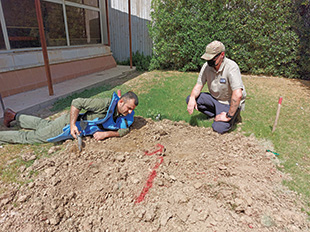
This is not to say, however, that localization of HMA would not be beneficial. On the contrary, there are good reasons to support the development of national mine action NGOs. For one, HMA efforts led by international actors without local involvement can face significant inefficiencies, higher costs, and delays, as well as a mismatch between services provided and actual needs. Thanks to local knowledge and networks as well as a lack of cultural or language barriers, local actors often manage to build highly positive relationships with national authorities that can help in avoiding delays and addressing potential issues early on. More importantly, once local capacities are built, true humanitarian spirit should espouse the notion that national actors should be enabled to address national challenges. In addition, where NNGOs are able to receive national funding, this presents an ethical exit strategy for many international donors.
What Has Been Done So Far?
The most straightforward approach to localization in HMA is the direct funding of NNGOs. Some intermediary funding institutions, particularly those with the capacity to manage numerous small grants, have applied this method for considerable time. However, the funding is usually of low quality in terms of size, duration, and predictability, generally includes no provision for indirect costs (“overhead”), and often requires a contribution from the NNGO. Such an approach does not allow NNGOs to build an operational, management, and support structure independent of individual grants, and it usually prevents NNGOs from venturing past explosive ordnance risk education (EORE) and non-technical survey (NTS), leaving the far more sizable clearance grants to INGOs and commercial mine action actors.
A second approach to localization in HMA is the provision of sub-grants by INGOs to NNGO partners, who are then responsible for the implementation of specific activities. However, many such sub-grants suffer from similar shortcomings as small direct grants, as they are usually small in both size and scope and do not include funding for indirect costs or equipment.6
In recent years, a new approach has been tested and has shown great promise. Capacity development partnerships between INGOs and NNGOs, such as the United Nations Mine Action Service’s explosive hazard management partnership grants in Iraq, transform the principal-agent relationship described previously into a mentor-mentee relationship.7 Rather than merely evaluating the mine action outputs of their grantees, some donors of capacity development partnerships have begun to measure the success of a grant in terms of the NNGO’s growth as an organization, including its technical capabilities, financial accountability, quality management, administrative functions, among others.
Challenges to Localization
For localization in HMA, and in the humanitarian sector more broadly, to take root, three key stakeholders must be satisfied: institutional donors, INGOs, and the governments and relevant authorities of affected countries. Additionally, NNGOs harbor a set of internal obstacles that equally require addressing for meaningful localization to ensue.
International donors. International donors and intermediary funding institutions face a particular set of challenges that remain a key obstacle for localization of HMA, including legislative and political constraints, accountability concerns, and administrative issues.8
These issues are further compounded by the fact that donors often lack clarity on how to measure success in localization efforts.
- International donors must navigate regulatory and political constraints in determining the eligibility of recipients for fund disbursement.
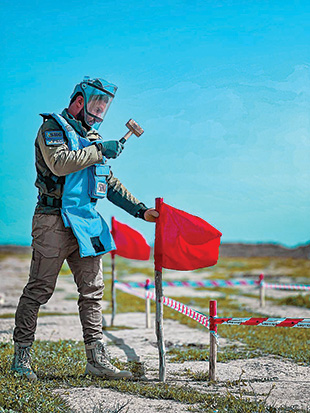
Before merging the United Kingdom’s Department for International Development with the Foreign and Commonwealth Office, former British PM Boris Johnson elaborated on his views about aid and foreign policy: “They are one and the same endeavour, and they’re designed to achieve the same goals, which are right in themselves and serve our national interest.”9 Statements and actions such as this make evident the connection between many states’ foreign policy objectives and their involvement in international humanitarian efforts. While this correlation is by no means ubiquitous among international donors, foreign policy considerations appear to have gained greater prominence in shaping decisions regarding humanitarian aid, particularly in the period following 9/11.10
INGOs are at times perceived as better suited to pursue a state’s national objectives through humanitarian action, and as a result, certain international donors seem reluctant to move away from INGO implementing partners. This is further compounded by some donors’ legislative requirements to spend a certain percentage of grant funding within their respective country, often resulting in the ineligibility of national NGOs.
International donors are concerned about NNGO capacities in risk management and the assurance of accountability. In uplifting NNGOs, the international donor community faces a major conundrum. On the one hand, entrusting their money to small, relatively unknown organizations, in unfamiliar and often opaque jurisdictions, that lack the stringent accountability standards of large, established INGOs of the global north poses a major risk of financial mismanagement and outright corruption. On the other hand, imposing extensive financial management and reporting standards that took decades to develop and refine—which established INGOs had the opportunity to adapt to over this lengthy period—on fledgling NNGOs in the global south has little promise of feasibility. In the mine action sector, this dilemma is further compounded by the sheer size of grant funding that is required for impactful clearance operations.
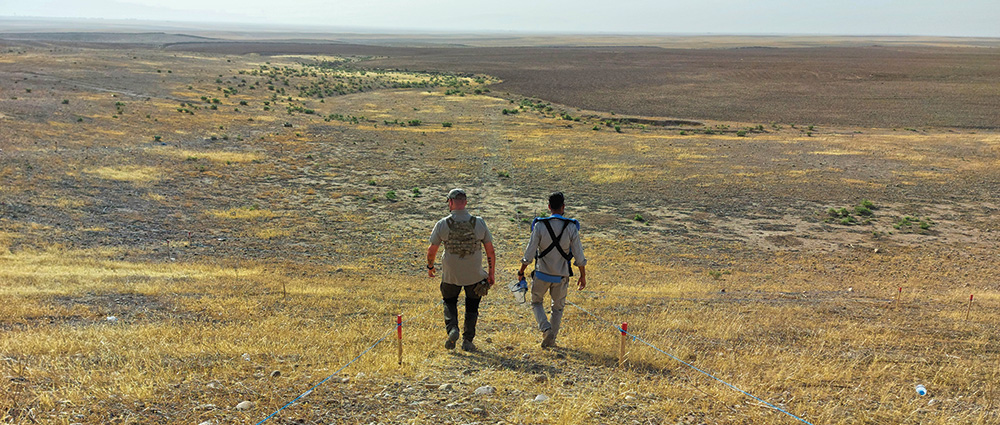
One barrier has proven particularly prohibitive to the growth of NNGOs: To merely be considered for funding, many international donors require NGOs to provide audited financial accounts for at least three financial years. For young NNGOs in the global south, financial reporting requirements such as these are often beyond onerous for several reasons:
Financial constraints: Local NGOs often operate on limited budgets and may not have the resources or funding to conduct formal audits, which can be expensive.
Funding status: In the early stages of their development, NNGOs are often implementing partners on sub-grants from INGOs. As such, their international partners often hold the budget and fulfill the audit requirements, leaving local NGOs without audited accounts.
Manpower: Smaller NGOs may not have dedicated large accounting or financial departments capable of maintaining the level of financial reporting required for audits.
Technical knowledge: NNGOs often lack the technical accounting expertise and understanding of the specific regulatory and legal requirements needed to prepare financial statements that comply with donor demands, making it difficult to even begin the process.
Administrative burden: The time and effort required to prepare for an audit can divert valuable resources away from an NNGO's core humanitarian activities.
Local context: The financial practices and reporting standards in the global south may differ from what international donors are accustomed to, leading to misunderstandings or the perception of financial mismanagement even when none exists.
Stringent financial requirements are often based on standards and practices common in the global north, without consideration for the different operating environments in the global south. Such requirements act as a significant barrier for NNGOs that have not been in operation or received direct funding for long enough to meet the financial reporting criteria. This often means that only larger, more established INGOs can qualify for funding, perpetuating a cycle of inequality and impeding localization within the HMA sector.
To circumvent the risk of financial mismanagement, international donors often resolve to providing low quality funding that bears lower risks. Such funding usually does not cover provisions for NNGO indirect costs, but often includes requirements for matching funds, potentially transforming the implicit expectation that NNGOs misappropriate funds that then must be used for matching funds into a self-fulfilling prophecy. Low quality funding for NNGOs also regularly excludes the permission to purchase assets—a crucial aspect of most HMA activities. Naturally, risk mitigation measures are understandable. Foreign and development ministers must answer to their respective parliament. Any NNGO mismanagement such as the diversion of funds or donor-funded assets being used against donor interests creates significant problems for political decision-makers that donor agencies are obliged to consider.
International donors face logistical and capability challenges associated with managing numerous small grants directly as opposed to channeling larger grants through intermediaries. As a consequence of accountability concerns, international donors and intermediary funding institutions are often unwilling to provide quality funding (sizable, long-term, predictable, flexible, including indirect costs) to NNGOs. These funding restrictions prevent NNGOs from engaging in high-cost mine action activities such as clearance, making it difficult to establish a sustainable national mine action capacity. In turn, small NNGOs with little means to pay for indirect costs face serious challenges when confronted with delays in the provision of funding installments. While INGOs may be able to cover grant expenses until delayed funding installments arrive, this presents a major obstacle for most NNGOs.
Capacity development is difficult to measure. In the absence of a clear set of indicators to measure the success of localization initiatives, donors often rely on quantitative rather than qualitative indicators. For example, capacity development projects often focus on trainings for NNGOs, many of which may be unnecessary, irrelevant, and time-consuming, when less measurable but more material activities such as on-the-job mentoring may yield far better results but are more difficult to evaluate.
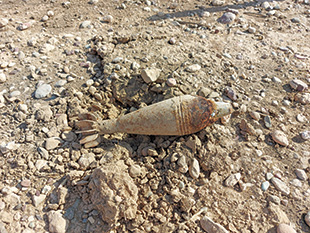
National Authorities and Regulations
Despite international agreements and eager NNGOs in the global south, many governments in countries affected by EO have not yet displayed serious commitment to support the localization of HMA or are uncertain how to best do so. For example, in many EO-affected countries there is a notable absence of national funding for local HMA actors—a feature that could have the potential to drive sustainable HMA localization. However, there are also risks involved in national funding for local HMA actors, as some of the most EO-affected countries also find themselves grappling with issues related to financial mismanagement, corruption, and nepotism. With money flowing into national mine action bodies, concerns include the risk of fiscal malpractice and outright fraud due to subpar due diligence measures, and the possibility that skilled staff might be replaced with clients of political patrons.
In addition, there are also regulatory challenges. The applicable laws for NGOs in many developing countries differ significantly from those in the global north. As a result, NNGOs are often set up in ways that are incompatible with international donor requirements, for example lacking an independent board. Moreover, NMAS stipulations and NMAC procedures can present an impediment for nascent NNGOs, for example when activities such as NTS—a traditional entryway into the mine action sector for NNGOs—require more technical applications, such as the ability to install semi-permanent markings, which usually requires clearance-related accreditations that require significantly more expertise to obtain. In addition, accreditation procedures can often be onerous, expensive, and time-consuming, thereby further raising the bar for NNGOs to enter the HMA sector.
International NGOs
Successful capacity development projects have proven that INGOs can be important allies in NNGOs’ pursuit of greater localization in HMA. However, INGOs, like all organizations, also have a vested interest in self-preservation and overcoming their competition rather than adding to their ranks. Expecting INGOs to eagerly neglect their organizational imperative for maintaining funding streams would be exceedingly optimistic. Unless donors can find ways to mitigate competition over funding and provide serious incentives for INGOs, reliance on good-will and humanitarian commitments alone will at times face the risk of only producing moderate results in HMA capacity development and localization efforts.
In the past, some INGO have proven to be inflexible in their approach to capacity development, requiring NNGO partners to adhere to unnecessary, unhelpful, or even counterproductive standards and practices that do not match the size, scope, or context of their NNGO partner. This is in part a result of an imbalance in the partner selection process, where INGOs often hold all the power, while NNGOs are in many cases merely recipients with little leverage of their own.
National NGOs
One of the key challenges for NNGOs is the complexity of international donor requirements. Whereas INGOs often had decades to develop alongside donors’ evolving funding mechanisms and accountability requirements, young NNGOs are confronted with a seemingly impervious web of serpentine regulations. Fulfilling such complex administrative requirements is often beyond the capacity of even more established NNGOs. However, many national HMA organizations may also face challenges with seemingly routine tasks, such as preparing high-quality proposals that meet international donor standards, be it due to language barriers or a lack of experience and knowledge of donor priorities. The latter is, in many instances, a consequence of NNGOs’ limited access to networking opportunities with international donors, which in turn often stems from NNGOs’ lack of visibility, who don’t possess the ability to reach international donors.
When global events shift donor interests, and subsequently funding streams, INGOs might face problems in specific country programs—and opportunities in others—whereas NNGOs in the same situation find themselves confronted with more existential issues. Moreover, NNGOs are exposed to a host of other issues that affect INGOs far less, including ethnic divisions, political pressure, clan dynamics, land conflicts, or customary expectations. For example, in some countries it is common practice that family members in high positions are expected to extend patronage to their relatives, by providing money, contracts, or jobs. INGOs and their international management staff are often not at the same risk of such external influences and expectations.
Lastly, the uncomfortable truth is that there have been instances of NNGOs engaging in financial mismanagement. Such cases often unfairly taint the image of an entire group of organizations and erode trust and the progress that was built upon it.
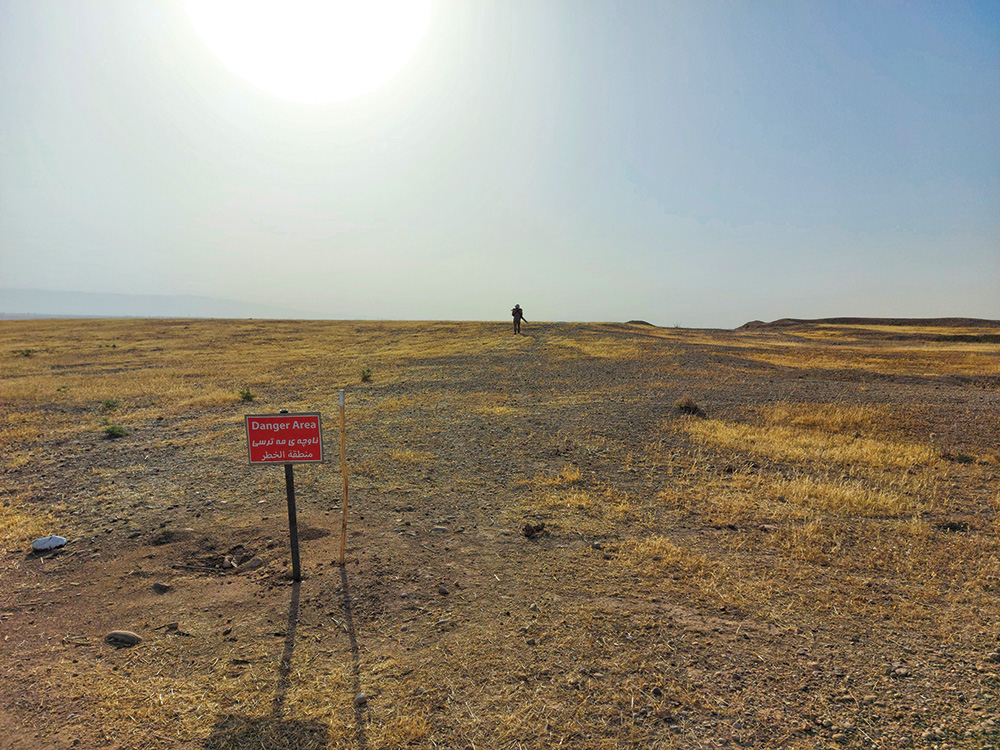
Ways Forward
There is little doubt among practitioners that HMA localization faces a host of challenges, but there are also significant shimmers of hope. NNGOs are increasingly organizing, sharing experiences and best practices, and unifying their voices in demanding greater participation. Moreover, there are various actions that all stakeholders can take to overcome obstacles on the way to meaningful, sustainable localization.
International Donors: As identified previously, one of the key concerns of international donors is NNGO accountability. To ensure that NNGOs are compliant with basic accountability standards and on a sincere path to full compliance with all donor requirements given the right support and training, international donors could vet NNGOs, either directly or through a contracted partner, and create a roster of eligible NNGOs. Those organizations that pass the vetting should be afforded more leniency during their development of accountability standards that meet the full donor requirements.
To help NNGOs in developing their knowledge and ability to comply with complex donor requirements, international donors could fund the embedding of INGO or commercial finance staff within NNGOs, who will support the latter in maturing into organizations that can comply with the required standards in accountability and transparency. This may also include funding for NNGOs to contract finance functions and training therein to specialized service providers.
To ensure sustainability, promising NNGOs should be provided with funding for indirect costs and key HMA assets.11 This should also extend to capacity development partnership grants, where funding for indirect costs should be split evenly between INGO and NNGO partners. Allowing NNGOs to establish project-independent managerial and support functions is a crucial aspect in making sure that localization will yield long-term results.
To achieve growing national ownership and work towards the goal that local actors are increasingly able to address local issues, NNGOs should be able to count on some funding provided by their national governments, particularly in countries that have the means for it. International donors can buttress this transition, by advocating for national funding, supporting national mine action bodies in anti-corruption efforts, and by providing matching funding to national funding that is accessible solely to NNGOs and linked to strong accountability mechanisms. Such measures would significantly help to ensure the sustainability of localization efforts.
Another key issue to address is the risk that INGOs, a vital partner in the capacity development of NNGOs, feel constrained to act against their own organizational interests, for example by creating competition or sharing their funding streams. Rather than solely relying on goodwill and INGOs’ humanitarian ethos, international donors should appreciate INGOs’ organizational constraints, and work towards developing incentives for INGOs to commit to effective, serious capacity development efforts with clear and reasonable objectives. For example, separate funding streams for national and international HMA actors, respectively, would reduce the perception of competition. The implementation of successful capacity development projects could also be rewarded with preferential status in future proposal evaluations.
To reduce the entry barriers for NNGOs, international donors should simplify their proposal formats and, where possible, start to accept NNGO proposals, reports, and general communications in the respective national language. They can also be important allies in working towards a greater balance between national and international organizations in coordination structures, and in putting local voices in the lead. This should also include an increased participation and role of local actors from the global south at high-level events.
Finally, international donors should work with INGOs and NNGOs in developing better ways of measuring success in capacity development and localization efforts. This will require increasing awareness that many aspects of NNGO capacity development are better understood in qualitative rather than quantitative terms—a measure that requires closer interaction with NNGO partners on the ground.
National authorities. National governments and their mine action regulatory bodies have numerous tools to support localization of HMA. By providing funding for NNGOs, working towards improving financial management, and tackling issues such as corruption and nepotism, national mine action bodies can be a key driver of sustainable national ownership. They should also review and adjust their regulatory frameworks to support NNGOs in complying with international standards, and to remove obstacles for nascent local actors that seek to gain a foothold in the HMA sector. Moreover, national governments should fully commit to localization efforts, pledge to support the implementation of relevant international agreements such as the Grand Bargain, and most importantly, listen to local voices, for example by involving all national stakeholders in the development of clear localization action plans.
INGO. With the right incentives, INGOs can be vital partners to NNGOs and a key driver in the localization of HMA. They should transform patron-client relationships with sub-granted NNGOs to mentor-mentee partnerships focused on genuine capacity development. Committed INGOs should also be open to sharing the funding for indirect costs with NNGO partners, and should accept that sustainable capacity development must go beyond operational aspects and manifold trainings—becoming a whole-of-organization approach that involves all departments of both partners.
NNGO. Many NNGOs have come a long way, and some have developed accountability measures, operational expertise, and donor relations that rival those of long-established INGOs. As a sector, however, NNGOs still must overcome negative perceptions and stereotypes. NNGOs have to show that they are serious and open about their efforts in improving accountability, transparency, and compliance with international donor requirements. They should actively work on improving visibility, engage national authorities, international donors and INGOs, and not be hesitant to ask for help and support, for example through capacity development partnerships.

Conclusion
Despite many challenges, mine action has started seeing impactful localization efforts, particularly when earnest INGO-NNGO capacity development partnerships are subsequently followed by donor trust and sustainable, quality funding, ideally to an increasing degree through national funding streams. When all stakeholders commit to work together and listen to each other more closely, increased participation of local HMA actors will undoubtedly enrich and invigorate the mine action sector.
See endnotes below.
 Markus Schindler is currently a Program Manager for Fondation suisse de déminage (FSD) in Ukraine, where he is leading the implementation of a mine action grant. His experience spans a decade working with FSD in various roles spread across multiple countries, including Iraq, Afghanistan, Tajikistan, and the Philippines. Schindler holds a Master’s Degree in Strategic Studies from University College Cork, a Master’s Degree in Social Science and Ethics from Ruhr University Bochum, and a Bachelor’s Degree in Philosophy from the University of Regensburg.
Markus Schindler is currently a Program Manager for Fondation suisse de déminage (FSD) in Ukraine, where he is leading the implementation of a mine action grant. His experience spans a decade working with FSD in various roles spread across multiple countries, including Iraq, Afghanistan, Tajikistan, and the Philippines. Schindler holds a Master’s Degree in Strategic Studies from University College Cork, a Master’s Degree in Social Science and Ethics from Ruhr University Bochum, and a Bachelor’s Degree in Philosophy from the University of Regensburg.

